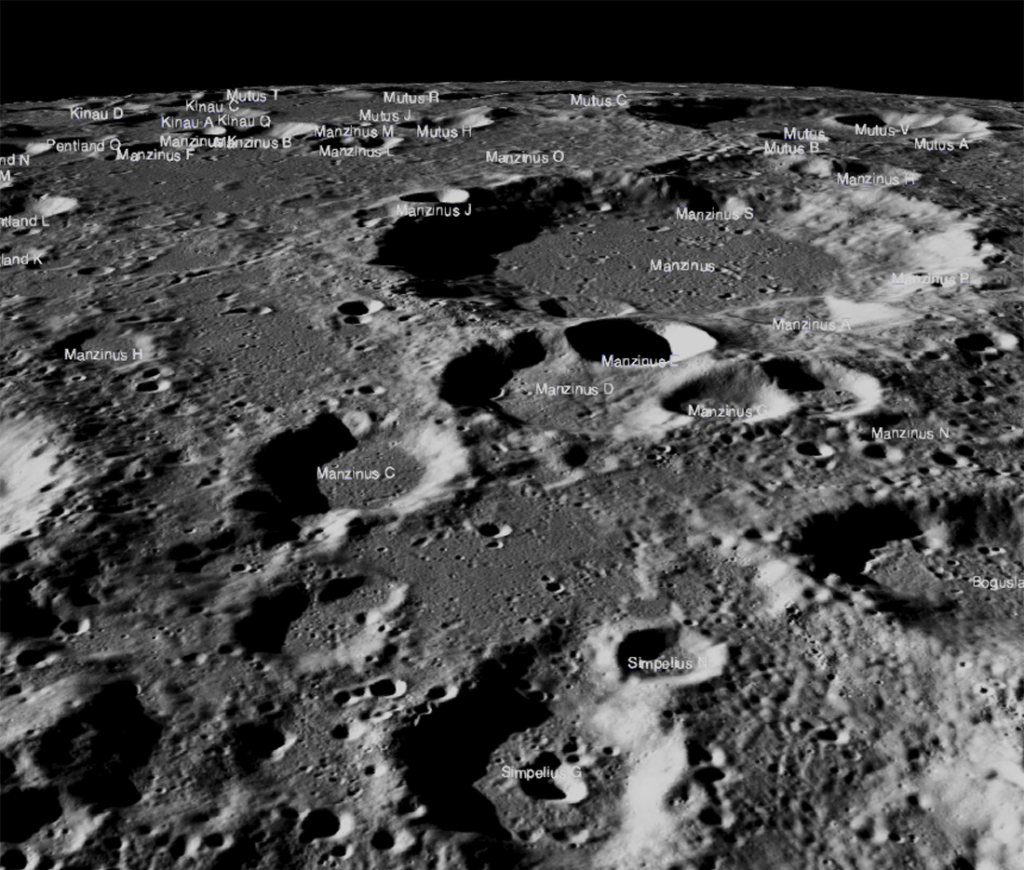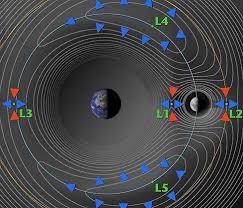
Lunar surface. Photo credit: NASA/Goddard/Arizona State University
WASHINGTON: The Space Force and Air Force Research Laboratory are partnering to develop a highly mobile experimental satellite to demonstrate operations in lunar orbit, including surveilling the lunar surface.
The Defense Deep Space Sentinel (D2S2) is being designed as a pathfinder “to demonstrate extreme mobility of small satellites via advanced electric propulsion and compact power system technologies that are foundational for a variety of deep space missions, including domain awareness, rendezvous/proximity operations, space servicing, space object removal and recovery, and other applications in defensive space operations,” James Haywood, deputy director of the AFRL Center for Rapid Innovation (CRI), told me in an email.
The D2S2 satellite also will carry a 20cm camera “to demonstrate and characterize the sensor performance needed to identify and respond to potential threats in deep space, provide situational awareness in the cislunar environment, and for lunar imaging,” he said.
CRI, which undertakes technology demonstrations and prototyping for AFRL, is the project integrator for the rapid prototype project. The project started last year, and is planning launch in the fourth quarter of 2022, said Haywood. Because the project’s goal is to move as fast as possible to get the satellite into orbit, “cost estimates are being refined,” he added.
“The primary mission objectives of D2S2 are to demonstrate extreme orbit mobility in a small satellite, and to use that capability to transit from GEO to a lunar orbit,” he explained. “The D2S2 will fly high-power, light weight solar arrays with small, highly efficient electric propulsion to travel from GEO to several different lunar orbit regimes, including Earth-Moon Lagrangian points, halo orbits, and the associated modeling for environmental and orbital dynamics in these regimes,” he said.

Earth-Moon Lagrange points, NASA image
The Lagrange points are orbital positions where “the gravitational pull of two large masses precisely equals the centripetal force required for a small object to move with them,” according to NASA’s website. Two of the Lagrange points — L1, on a straight line between the Earth and the Moon; and L2, on the far side of the Moon — are of particular interest to the Space Force, as well as NASA’s Artemis lunar exploration program, because they essentially allow a satellite to ‘hover’ in a fairly stable orbit and provide an unobstructed view of the lunar surface. China’s Queqiao communications satellite, for example, is orbiting at L2 to keep in touch with their lunar lander on the dark side of the Moon.
The new Space Force doctrine “clearly calls out that we have a responsibility not just to operate in the geocentric orbit regime, … but also the cislunar orbit regime, out to the Moon and beyond the Moon,” Gordon Kordyak, Space Force executive agent for space domain awareness, told the Center for Strategic and International Studies (CSIS) last week.
“If you think about the Lagrange points, and the different gravitational orbits in the Moon environment, if you think about the solar radiation environment that exists in cislunar space, there are a lot of challenges that we will have to figure out … to operate within that environment. But I will say that the need to figure that out … is real,” he added.
Indeed, Kordyak said that the Space Force and AFRL have a number of joint efforts to do exactly that.
“Today, through a broad partnership that we have with Air Force Research Lab, … we have actually released techniques,” he said. “We’ve initiated architectural analyses that are looking at existing sensors today, working with operational units to plan your TTPs — your tactics, techniques and procedures — for operating systems in cislunar space, and how that’s different than in geocentric space. What are sensors seeing today? And what do they need to see tomorrow?”
With the D2S2 satellite, he said, “We’re going to learn about what it means to put an asset in that environment and how to operate it long term in that environment.”
As Breaking D readers know, AFRL also is about to kick off a project called the Cislunar Highway Patrol Satellite (CHPS), which would be the first Space Domain Awareness (SDA) to focus on cislunar space. That experimental satellite will demo sensor systems to find out what would be needed to keep an eye on spacecraft in the orbit around the Moon.
Military space leaders over the past year have been gradually turning up the volume on concerns about China’s long-term lunar exploration plans. China last January became the first country to land a rover on the far side of the Moon, and on Nov. 23 launched the Chang’e-5 mission to gather samples from there and return them to Earth.
Space Force and NASA in September signed a memorandum of understanding to expand cooperation on cislunar space activities. NASA’s Artemis program seeks to put US astronauts back on the Moon by 2024. But the Artemis effort is different than the historic Apollo program, as it is aimed at establishing a permanent US presence on and around the Moon — and eventually Mars — as part of the overarching Trump administration goal of opening space for future commerce. This effort includes encouraging companies to pursue resource extraction, such as water and minerals, from the Moon and nearby asteroids.
"Demo" - Google News
November 30, 2020 at 10:27PM
https://ift.tt/2JdAhoF
Space Force, AFRL To Demo Mobile Lunar Spy Sat - Breaking Defense
"Demo" - Google News
https://ift.tt/35q1UQ2
https://ift.tt/2Wis8la

No comments:
Post a Comment